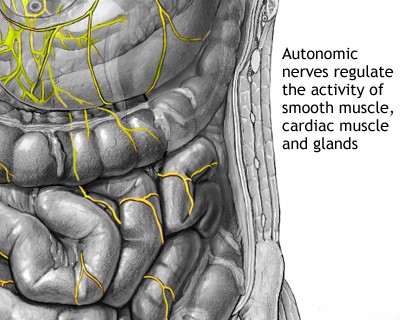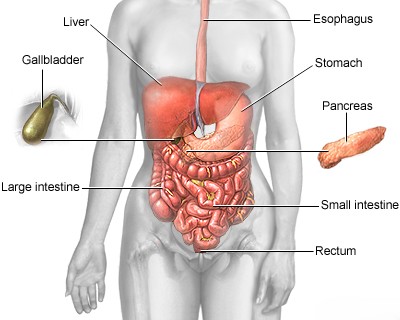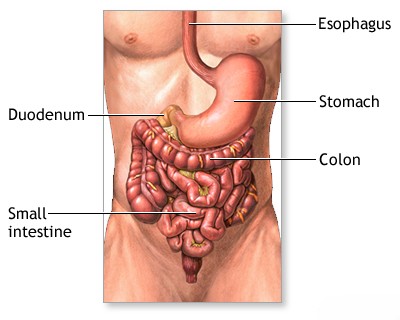Visceral manipulation
What is Visceral Manipulation (VM)?
Visceral Manipulation (VM) is a gentle, hands-on manual therapy technique that involves assessing and treating the mobility and motility (inherent motion) of the internal organs (viscera) and their surrounding connective tissues (fascia, ligaments, membranes) (1, 2). It was largely developed by French osteopath Jean-Pierre Barral.
VM practitioners work with the understanding that organs need to move freely relative to each other and surrounding structures for optimal function. They believe that restrictions in this movement—caused by factors like surgery, infection, inflammation, trauma, or posture—can potentially impair organ function and contribute to pain or dysfunction elsewhere in the body through fascial and neurological connections (1, 2).
Principles and Theory Behind VM
The theoretical basis of VM includes several concepts (1, 2):
- Visceral Mobility: The ability of an organ to move in response to voluntary body movement (e.g., diaphragm movement during breathing, body bending).
- Visceral Motility: An inherent, subtle, slow rhythmic motion purported to exist within the organs themselves.
- Connective Tissue Links: Organs are suspended and connected within the body cavities by fascia, ligaments, and membranes. Tension or restriction in these tissues is thought to affect organ position and mobility.
- Viscerosomatic Reflexes: The concept that dysfunction or irritation of an internal organ can cause referred pain or dysfunction in musculoskeletal structures that share nerve pathways (somatovisceral reflexes also exist) (3). Proponents of VM use this concept to explain how treating visceral restrictions might alleviate seemingly unrelated musculoskeletal pain. For example, they might propose links between:
- Liver/gallbladder issues and right shoulder/neck pain.
- Stomach issues and pain under the left shoulder blade.
- Kidney issues and low back/hip/heel pain.
- Bladder/pelvic organ issues and sacral/thoracic/lower limb pain.
Techniques Used in VM
VM techniques involve gentle, specific, hands-on forces applied by the practitioner to encourage the normal mobility, tone, and inherent motion of the viscera and their connective tissues (1, 2). The practitioner uses palpation skills to assess for areas of restricted movement and then applies precise, gentle pressure or mobilization techniques to release these restrictions.
Techniques are generally non-invasive and aim to work *with* the body's tissues rather than forcefully correcting them. Practitioners consider the anatomical relationships and fascial connections of the organs during treatment.
Claimed Applications of VM
Practitioners apply VM with the intention of addressing a wide range of issues, often believing it can complement conventional treatment for various conditions by improving physiological function and reducing related pain. It is important to note that strong scientific evidence supporting VM's effectiveness for many of these conditions is limited (4, 5).
Musculoskeletal Symptoms
VM is often applied for musculoskeletal pain syndromes where proponents suspect a visceral contribution, such as (1, 2):
- Chronic spinal pain (neck, back, sacrum)
- Shoulder, hip, or knee pain
- Headaches and migraines
- Sciatica-like symptoms
The rationale is that releasing visceral restrictions may alleviate referred pain or reduce mechanical strain on the spine and pelvis transmitted through fascial connections.
Gastrointestinal Issues
VM practitioners may apply techniques for symptoms associated with (1, 2):
- Chronic constipation or diarrhea
- Bloating and abdominal discomfort
- Symptoms related to Gastroesophageal Reflux Disease (GERD)
- Post-surgical or post-inflammatory adhesions
- Functional digestive disorders (e.g., Irritable Bowel Syndrome - IBS symptoms)
- Symptoms associated with gallbladder dyskinesia or gastritis (Note: VM does not treat the underlying disease but aims to improve related function/mobility).
- Symptoms related to organ ptosis (e.g., gastroptosis).
Urogenital Issues
Areas where VM is sometimes applied include (1, 2):
- Chronic pelvic pain
- Dysmenorrhea (painful menstruation)
- Symptoms associated with endometriosis
- Certain types of urinary incontinence or recurrent cystitis symptoms
- Postpartum recovery
- Symptoms associated with prostatitis
- Symptoms potentially related to organ prolapse (uterine dystopia) or kidney ptosis (nephroptosis)
- As part of a holistic approach to infertility (Note: No reliable evidence supports VM as a treatment for infertility itself).
Practitioners believe that addressing restrictions around pelvic and abdominal organs may improve circulation, nerve function, and overall organ health in these systems.
Scientific Perspective and Evidence
Visceral Manipulation is considered a complementary or alternative manual therapy. While it has theoretical frameworks rooted in osteopathic principles and clinical anecdotes supporting its use, there is currently a lack of high-quality scientific evidence from rigorous clinical trials to definitively support its effectiveness for treating specific diseases or consistently achieving the proposed physiological effects (4, 5).
- Mechanism Uncertainty: The proposed mechanisms, such as specific organ motility rhythms or direct effects on organ function via gentle external manipulation, are difficult to validate scientifically and are not universally accepted within mainstream physiology (4).
- Evidence Quality: Much of the existing research consists of case studies, small pilot studies, or studies with methodological limitations. Larger, well-designed randomized controlled trials are needed (5).
- Placebo Effect: As with many manual therapies, the gentle touch, focused attention, and patient expectations involved in VM may contribute significantly to perceived benefits through non-specific or placebo effects (4).
While some patients report symptomatic relief, VM should not be considered a substitute for conventional medical diagnosis and treatment of underlying diseases affecting the internal organs or musculoskeletal system.
Safety, Contraindications, and Considerations
Visceral manipulation generally involves gentle techniques and is often considered low-risk when performed by a properly trained practitioner (1). However, precautions and contraindications exist:
- Absolute Contraindications: Direct manipulation should typically be avoided over areas of active infection, malignancy (cancer), recent surgery (unless cleared by surgeon), aneurysms, internal bleeding, or acute organ inflammation (e.g., acute appendicitis, cholecystitis).
- Precautions: Caution is needed with pregnancy (requires specialized training), severe osteoporosis, significant adhesions, presence of foreign bodies (e.g., IUDs - relative), certain clotting disorders, or fragile tissues.
- Importance of Diagnosis: VM practitioners typically do not diagnose medical diseases. It is crucial that individuals with symptoms potentially related to internal organs receive a proper medical diagnosis from a physician before considering VM, to rule out serious conditions requiring conventional medical or surgical treatment.
- Practitioner Training: Training and regulation for VM vary. Seek practitioners with extensive, recognized training in these specific techniques (e.g., through the Barral Institute or qualified osteopathic programs).
Differential Diagnosis
Symptoms sometimes addressed by VM can have many underlying causes requiring medical evaluation:
| Presenting Symptom Area | Potential Medical Differential Diagnoses |
|---|---|
| Musculoskeletal Pain (Back, Shoulder, Hip) | Disc herniation, Spinal stenosis, Facet arthropathy, Rotator cuff tear, Arthritis, Fractures, Nerve entrapment, Referred pain from actual organ disease (e.g., cardiac, renal colic, pancreatitis). |
| Gastrointestinal Symptoms (Pain, Bloating, Altered Bowels) | Inflammatory Bowel Disease (Crohn's, Ulcerative Colitis), Peptic Ulcer Disease, Gallstones/Cholecystitis, Pancreatitis, Diverticulitis, Infections (e.g., gastroenteritis), Celiac Disease, Malignancy, Irritable Bowel Syndrome (IBS - diagnosis of exclusion). |
| Urogenital/Pelvic Symptoms (Pain, Urinary Issues, Menstrual Issues) | Urinary Tract Infection (UTI), Kidney Stones, Interstitial Cystitis/Bladder Pain Syndrome, Endometriosis, Pelvic Inflammatory Disease (PID), Ovarian Cysts, Uterine Fibroids, Prostatitis, Pelvic Floor Muscle Dysfunction, Malignancy. |
It is essential to rule out these and other medical conditions through appropriate diagnostic testing before attributing symptoms solely to visceral restrictions treatable by VM.
References
- Barral JP, Mercier P. Visceral Manipulation. Eastland Press; 1988 (Revised 2005). (Foundational text by the developer)
- The Barral Institute. What is Visceral Manipulation?. Accessed [Insert Access Date - e.g., April 20, 2024]. Available from: https://www.barralinstitute.com/therapies/index.php (Practitioner organization description)
- Beal MC. Viscerosomatic reflexes: a review. J Am Osteopath Assoc. 1985;85(12):786-801. (Review of the viscerosomatic concept within osteopathy)
- Guan L, Colloca L. Placebo and Nocebo Effects: An Update for Anesthesiologists. Anesth Analg. 2023;136(2):244-257. doi:10.1213/ANE.0000000000006120 (General discussion on non-specific effects relevant to manual therapies)
- Silva ACG, Biasotto-Gonzalez DA, Oliveira FHM. Effect of Osteopathic Visceral Manipulation on Pain, Cervical Range of Motion, and Upper Trapezius Muscle Activity in Patients With Chronic Nonspecific Neck Pain and Functional Dyspepsia: A Randomized, Double-Blind, Placebo-Controlled Trial. J Manipulative Physiol Ther. 2018;41(8):643-651. doi:10.1016/j.jmpt.2018.01.004 (Example of a clinical trial - note specific conditions and findings)




